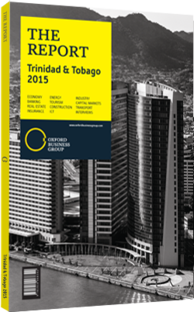Vasant Bharath, Minister of Trade, Industry, Investment and Communications (MTIIC): Interview

Interview: Vasant Bharath
To what extent is boosting the capacity of industry and services in Trinidad and Tobago linked to trade?
VASANT BHARATH: The ability to grow industrial capacity will define our future trade prospects. Our primary focus is on the country’s import bill, and we source investors with the expertise and experience to reduce these imports, to the extent that we are able to manufacture the goods ourselves. We have identified at least 20% of the import bill to be targeted for domestic production, including food, beverages and manufactured items.
Meanwhile, T&T ranks 21st in the world by exports per capita, with non-energy exports making up only 15% of the total. In 2013, the services sector contributed only 3.22% of exports, although it comprised 52% of GDP. The development of exports in services, using the country’s developed and highly educated pool of labour, is set to play a strategic role in growing our exports.
Huge growth opportunities come from tourism, as hotels and guest houses currently contribute just 0.66% of total services. The same goes for medical tourism, where we can count on some key health care clusters – most notably the corridor between St Augustine and Mt Hope in north Trinidad, which includes the largest medical facility in the Caribbean, the Eric Williams Medical Sciences Complex, and two large private hospitals, Medical Associates and St Augustine Private Hospital. Along with the new Children’s Hospital being built in Couva and the recently opened Teaching Hospital at the San Fernando General Hospital, these offer a solid base for growth in medical tourism. Growth is also forecasted within key fields like cardiac and dentistry.
Which sectors is the ministry promoting to position T&T as a regional centre for industry?
BHARATH: The government has taken a multifaceted approach to policy in order to support T&T in becoming a regional industrial centre. First and foremost is the development of an enabling environment. T&T continues to improve in international indices that measure the ease of doing business: in 2014 we were among the top 10 reformers in the World Bank’s “Doing Business” report. Second is the development of designated zones such as the Tamana InTech Park and the Cove Eco-Industrial and Business Park. In this vein, the MTIIC is also actively promoting the clean technology sector. The government conducted a year-long feasibility study on developing a solar industrial park, and once completed this $1.8bn capital investment is expected to boost T&T’s containerised exports by at least 20%. We will use local expertise and natural resources to manufacture solar panels along the entire value chain to deliver energy independence for the region.
Which of the planned economic diversification goals are the most attractive to investors?
BHARATH: From 2012 to 2013, foreign direct investment in non-hydrocarbons production increased by over 90%; in food, drink and tobacco by 63%; and in chemicals by 27%. This data demonstrates that we are on the right track. At the same time, we are promoting a number of strategic investments. In the maritime industry, the biggest project is the Sullivan Island Dry Docking and Ship Repair Facility, for a projected investment of $2.1bn. In ICT, we have $40m-100m worth of investment opportunities for co-location and establishment of data centres. In tourism, the Pt Gourde Hotel Development in Chaguaramas includes up-market condos, villas and a gated community for a total investment of $100m-200m, and we are promoting an integrated resort on Chacachacare Island involving investments of $100m-400m. Many of these opportunities are packaged to attract the kind of investors we need. A sustained drop in oil and gas prices certainly focuses the conversation on diversification. Sustained low oil prices may cause us to look at the timelines and milestones for diversification objectives and determine how they can be brought forward. In the meantime, the fundamentals of T&T’s economy are strong, and each sector will become more efficient as state spending decreases and traditional revenues streams are challenged.
You have reached the limit of premium articles you can view for free.
Choose from the options below to purchase print or digital editions of our Reports. You can also purchase a website subscription giving you unlimited access to all of our Reports online for 12 months.
If you have already purchased this Report or have a website subscription, please login to continue.

